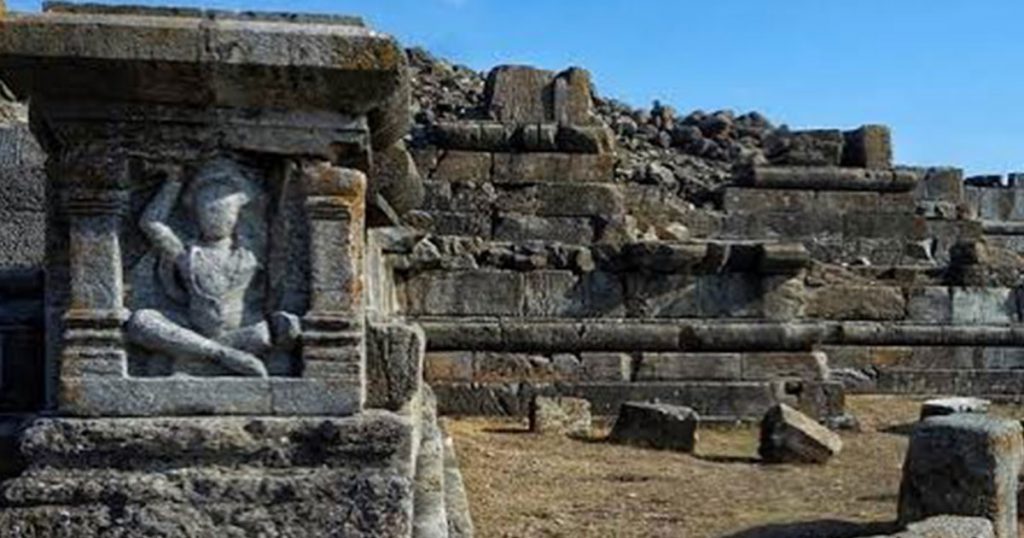Jammu and Kashmir has the distinction of being a unique place in the world. It has everything to look out for in a civilized nation. It has the characteristic of being the cradle of a unique brotherhood. Moreover, it has produced some great Kings that were intellectuals, engineers, human beings, etc. Here, we will talk about two kings in a concise manner.
Lalitaditya: The Empire builder of Kashmir
Lalitaditya was the first Emperor of Kashmir. He was called the “ Samudragupta” of Kashmir. One, who has visited the Martand Temple in Anantnag or the ruins at Parihaspura in Pattan, will definitely marvel at the engineering skills of their constructors. These big buildings or monuments were built by Lalitaditya Muktapida. More than 1200 years ago, Lalitaditya of Karkota family ruled Kashmir from 724 to 761 CE. He was grandson of Durlabhavardhana ( 625-661 AC) , who laid the foundation of Karkota family in Kashmir. Hieun Tsang, a Chinese Traveller, visited Kashmir during Durlabhavardhana’s rule and found remarkable religious toleration prevailing everywhere with Buddhism existing side by side with other religious beliefs.
Lalitaditya expanded the kingdom and made it an empire. He was filled with an unquenchable thirst of world conquest. His reign was marked conquests over a considerable portion of the Indian mainland and large tracts of Central Asian regions. After conquering the smaller states around the kingdom of Kashmir, he is reputed to have conquered the Kanauj, Punjab, Tibet, Badakshan, Gujarat, Malwa, Marwar, Iran, Bihar, and nearby territories. He fought against Yashovarman, the powerful king of Kanauj and defeated him. He raised his country to a pitch of glory it had never reached before. Moreover, he resisted the invasion of Arabs in 720s.
Buddhism, Saivism and Vaishnavism received Lalitaditya’s patronage in equal degree. He was a Shaivite and built many religious places for the people of many religious faiths. He treated all religions equally.
Lalitaditya was a great builder. He built the grand temple of Martand, to worship the sun god. He also constructed many buildings at Parihaspura, which are now in ruins. Parihaspura was his capital city. Moreover, he was a great patron of learning. He had many famous learned men of India and other courtiers at his court. Bhavabhuti was the court poet of Kashmir. Furthermore, Karkota rule is regarded as the glorious and remarkable period of Ancient Kashmir.
AVANTIWARMAN ( 855-883 CE)
Awantivarman, who laid the foundation of the Utpala Dynasty, was a peace loving king who did not fight wars. Instead, he devoted his resources to the welfare of his subjects. During his time, agriculture was the main occupation of the people in Kashmir. The growth in the production of crops was hampered by the devastating floods of the Jhelum and the overflow of Wular lake. These floods resulted in the destruction of the crop fields and the scarcity of staple foods in Kashmir. Awantivarman, with the help of his ministers, took many steps for improving the condition of the peasants in Kashmir. He took measures to improve irrigation facilities, dredging of the Jhelum river, and digging canals to save the country from recurring floods. In this work, the king was assisted by Suyya, which had good engineering skills. He managed to remove the blocking in the Jhelum near Baramulla and led the waters to flow smoothly out of the valley. The improvement in irrigation facilities led to the expansion in agriculture. He was also a great builder. He got constructed two lofty temples in the capital city of Avantipora.
In short, we have a great legacy. The need of the hour is to cherish it and preserve it for future generations. Our present generation doesn’t know much about these rulers. Due to communalization and the distortion of history, we have not been able to present history in its actual sense. The need of the hour is to read and present history the way it must be presented. Without history, there is no identity.
By: SYED MUSTAFA AHMAD




